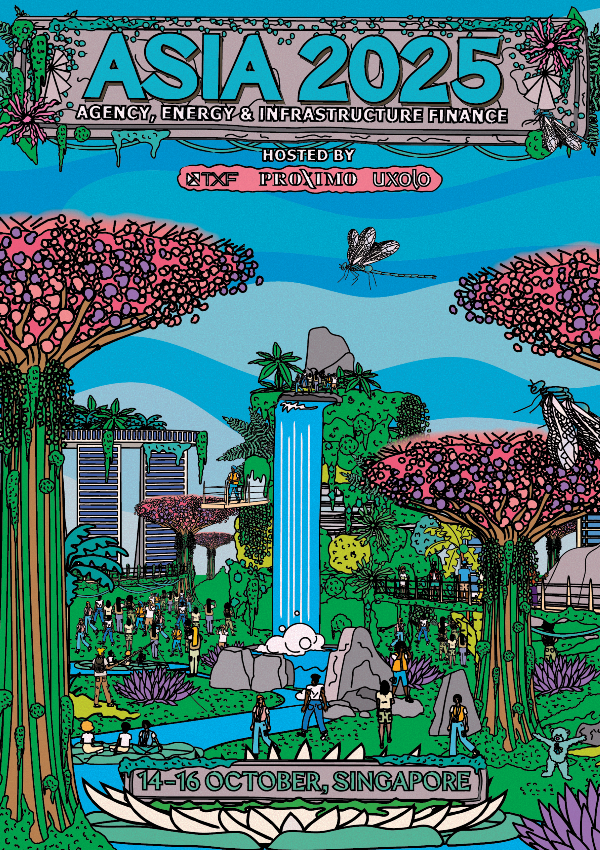Protection for a price – crop insurance takes root
Despite having nearly 20% of the world’s cultivated land, Africa’s share of the global agricultural market measured by insurance premiums paid is smaller than 1%, according to Jean-Christophe Debar, director of the Foundation for World Agriculture and Rurality (FARM). Latin America is better “but still under-developed”.

Despite having nearly 20% of the world’s cultivated land, Africa’s share of the global agricultural market measured by insurance premiums paid is smaller than 1%, according to Jean-Christophe Debar, director of the Foundation for World Agriculture and Rurality (FARM). Latin America is better “but still under-developed”.
Morocco, Nigeria and Senegal have public insurance schemes that are provided as part of national agricultural policy, but very few other countries offer the same. And while private players like insurers, brokers, input suppliers and mobile phone companies have launched 10 to 15 pilot projects across Africa, this still represents a very small part of the total agricultural population, he says.
By providing income stability and a safety net if the weather fails, insurance can give farmers the confidence to invest more in their farms, says Debar. Paradoxically, it can also encourage them to take a little more risk – for example experimenting with a new crop or agricultural technique – which can ultimately boost their yields. With so many risk factors already facing them, farmers can understandably err on the side of caution, he notes.
Insured farmers get more credit
Insurance also makes farmers a better risk for financiers and this is starting to help them access credit.
Not just microfinance institutions (MFIs) but also banks are beginning to offer credit to farmers in east Kenya that are insured under solutions pioneered by the Syngenta Foundation for Sustainable Agriculture, according to Marco Ferroni, its executive director.
Agricultural microfinance provider One Acre Fund has also been able to extend more credit because of using Syngenta Foundations rain-indexed crop insurance. “This is the next frontier,” Ferroni says.
Farmers feel more comfortable taking credit from One Acre Fund and leveraging their farm business if their most uncontrolled variable – rainfall – is no longer such a risk, according to a spokeswoman for the fund, which serves over 180,000 farmers across East Africa.
Also, “insuring our farmers en masse reduces the risk of our port- folio, allowing us to push our expansion and explore new products”.
Using insurance has also made it easier for farmers in Mali’s Coprocuma cooperative to access credit from banks and MFIs such as Soroyiriwaso and Sotobajo, according to its president, Ismaila Diakite.
Covering every angle
There are a number of different types of insurance available for farmers. The kind used depends on what the farmer wants insured, what risk he wants to insure it against, and how that risk – and its potential impact on him – are calculated.
Agricultural insurance tends to either protect a farmer’s costs for buying inputs like seed, fertiliser or insecticide, or his final crop yield.
In an innovative example of farmer input insurance, the Syngenta Foundation has teamed up with a seed supplier from Zimbabwe called SeedCo. When a farmer buys a bag of maize seeds from SeedCo, the price includes a premium. This insures the cost of the seeds if there is insufficient rainfall during a 21-day window from the date of planting. Inside each bag is a card with a special code that the farmer sends by SMS to a given number on the day he opens the bag and plants the seeds. The insurance runs from that day.
Because the insurance product is offered through a mobile payment system, claims are paid within days. In many cases, the farmer then has a second chance to buy new inputs and plant again within the same harvest.
Agricultural insurance can also be based on the actual yields of a specific farm – as with the public scheme in place in Senegal – or based on an index.
Most pilot projects in Africa favour the index approach, as not having to visit individual farms in the event of a claim is much cheaper in terms of administration. It is also less open to fraud.
With an index scheme, data from satellites or on-the-ground weather stations are used in algorithms to predict whether farmers in a given region will likely have lost some or all of their crop. These predictions are based on historic average yields under a variety of weather conditions.
The Syngenta Foundation offers weather-index insurance products in Kenya and Rwanda and intends to soon roll them out in Tanzania and other countries.
Because of the lower cost – and therefore lower premiums – index-based insurance is far more feasible than conventional insurance for smallholder farmers, says Ferroni. “The need for loss adjustment in the field would make it impossible to spread insurance on a massive scale to farmers because it is too expensive,” he says.
One weakness of index-based products is basis risk. This is the risk that an index does not accurately reflect the actual experiences of farmers, either because of technical problems or because some farmers faced highly localised weather conditions that were not reflected in the index.
“Suppose you have an insurance index which does not trigger when farmers do have a loss,” says Debar. “The second year, you will not have a lot of farmers purchasing the insurance product again.”
Within index-based insurance, products tend to rely on satellite data, on weather stations or a mix of both. The industry is generally moving more towards satellites, which are able to provide more location-specific data. The weather data gathered can be anything from rainfall or evaporation rates to wind or even hail.
Finally, insurance schemes can be individual or collective. The latter type is often offered to cooperatives who all farm in the same region. The more farmers signed up to a scheme, the cheaper it tends to be.
The Canadian-sponsored System of Agriculture Financing and Insurance in Haiti (Syfaah) is this year piloting a collective index-based crop insurance programme for rice producers in Haiti’s Artibonite valley. The insurance – which will be offered initially to 300 to 500 farmers – insures against natural and climatic risks such as hurricanes, flooding and plant disease, according to coordinator Jean-Yves Drolet.
Pricing is still too high
Insurance is no panacea though. Farming relies on multiple factors, all of which need to be in place. As Ferroni says: “If you have weather insurance but the wrong seeds for the altitude or ecology, the best of insurance will not help you.”
Although insurers are trying to devise systems to bring agricultural insurance costs down, premiums remain too high for many farmers, according to Debar.
Crop insurance premiums in Africa can be as high as 10% – a heavy burden for farmers who are among the world’s poorest, he says. This compares with around 5% to 6% for combined price and yield insurance in the US, after deduction of government subsidies.
Developing an insurance system is certainly expensive, including the costs of setting up and distributing a scheme and accessing quality data. There needs therefore to be a careful balancing act between “having a price low enough for the farmers but big enough for the insurer,” he says.
The average premium for Syngenta’s products is 8% to 12% of the insured value, although with its seed input tie-up, the premium is part-paid by the input company. “This is a way to accelerate their gain in market share, so it’s a fair deal,” says Ferroni.
Insurance is very expensive for the producers who need it most, says Hans Bogaard, head of agribusiness at RaboDevelopment.
If, for example, they have a drought once every five years, the premium starts at 20%. This is, of course, relative. Because most agriculture insurance products are based on the value of inputs, which are often roughly 20% of the crop value, “the insurance premium is 20% of 20% of your crop output.”
After extensive research into weather and yield data, Syfaah is piloting its rice insurance in Haiti with a preliminary premium of just 3.8% of the crop value, says Drolet. This will cost farmers the equivalent of around $45 per hectare. Although Haiti may be perceived as a country prone to climatic risk like hurricanes, the lower part of the Artibonite valley is partially sheltered and the 3.8% premium reflects this.
The current premium does not however take into account additional costs, such as for re-insurance or administration, which Syfaah is temporarily shouldering itself. Once the programme is handed over to a Haitian public-private consortium, the premium could be raised to a more viable level that reflects all costs. Syfaah is however in talks over whether Haiti’s government and other international partners could part-subsidise the product.
Critical mass
Reaching critical mass would help insurance providers lower their distribution costs and therefore their premiums.
Although the number of farmers accessing insurance through pilot projects in Africa is growing, it is still tiny compared with the continent’s huge farmer population, says Debar.
Obligatory insurance schemes, where farmers are not allowed to borrow from public institutions without also taking insurance – as found in India and Brazil – could be one solution, he says.
Coprocuma, a cooperative in Mali with more than 500,000 members, has made compulsory the use of rainfall index-based insurance to cover farmers’ corn crop. Broker Planet Guarantee was able to cut the premium from XAF32,500 per hectare ($67) to XAF16,000 ($33) per hectare if Coprocuma was able to sign up at least 15,000 producers, according to Diakite, the cooperative’s president.
The cooperative was alerted to the benefits of insurance after a disastrously dry planting season in 2011-2012, causing the loss of over 13,000 hectares of sesame and 3,251 hectares of corn. “We were left with nothing,” says Diakite. “It caused all our own capital and investment to dry up. That’s when we realised the impact of climate risk.”
Syngenta Foundation products insured 200,000 farmers in two African countries last year and there are plans for a much wider roll-out “country by country at a growing rate, working with banks and MFIs in a more systematic way,” says Ferroni.
Education is crucial
Given the myriad of small farms in sub-Saharan Africa, it will however take time to reach individual farmers and explain to them the benefits of insurance.
A lot of well-established small- to medium-sized (SME) farmers and processors have never used crop, weather or political insurance, “usually because they just are not aware that it’s available,” says Edward George, head of soft commodities research at Ecobank. “It’s a question of education” – letting them know that it’s available and why it’s used.
Farmers may be reluctant to pay for something they have never used before, especially in countries where corruption and lack of trust are big issues. The idea of paying money which – assuming all goes well – you will never get back, can also seem counter-intuitive to producers who may be new to the whole concept of insurance.
Coprocuma however, says it was “easy” to persuade farmers of the benefit of taking insurance, especially given their bitter experience of wide-scale crop failure in 2011-2012. “Although illiterate, farmers are not fools,” says Diakite.
Syfaah has taken a novel approach to education, producing a comic strip in Creole that explains how its insurance product works. Field agents will deliver 500 copies to farmers and, because of low adult literacy levels, sometimes to their children so that they can read it to their parents.
Comic strips were widely used in Haiti after the 2010 earthquake to spread information about cholera risks, for example, and farmers have responded well to Syfaah’s initiative. For the pilot to work, “it’s crucial to give proper information to farmers,” says Drolet, noting that Syfaah needs in particular to make clear that the product is based on an index rather than individual yields.
Government support is needed
The development of mobile technology plus satellites and automated weather stations is accelerating and will help spread the use of agricultural insurance, says Debar. “I’m optimistic when I see all the progress being made.”
However, one big factor holding back the spread of agricultural insurance is a lack of government support. To help agricultural insurance reach critical mass and become more affordable for farmers, countries in Africa and Latin America need more subsidised public insurance schemes, possibly supported by international organisations like the World Bank or IFAD, he says.
Of course, they should only back well- designed, viable products, “but I’m a bit sceptical about the possibility of reaching a large scale without some type of public support,” he says. “There are still cases to be made to some governments in West Africa.”
Pilot projects are already working hard to experiment with new insurance products and get farmers on board. Technology is helping bring costs down and make insurance easier to deliver. To move agricultural insurance to the next stage, governments now need to lend their weight.





